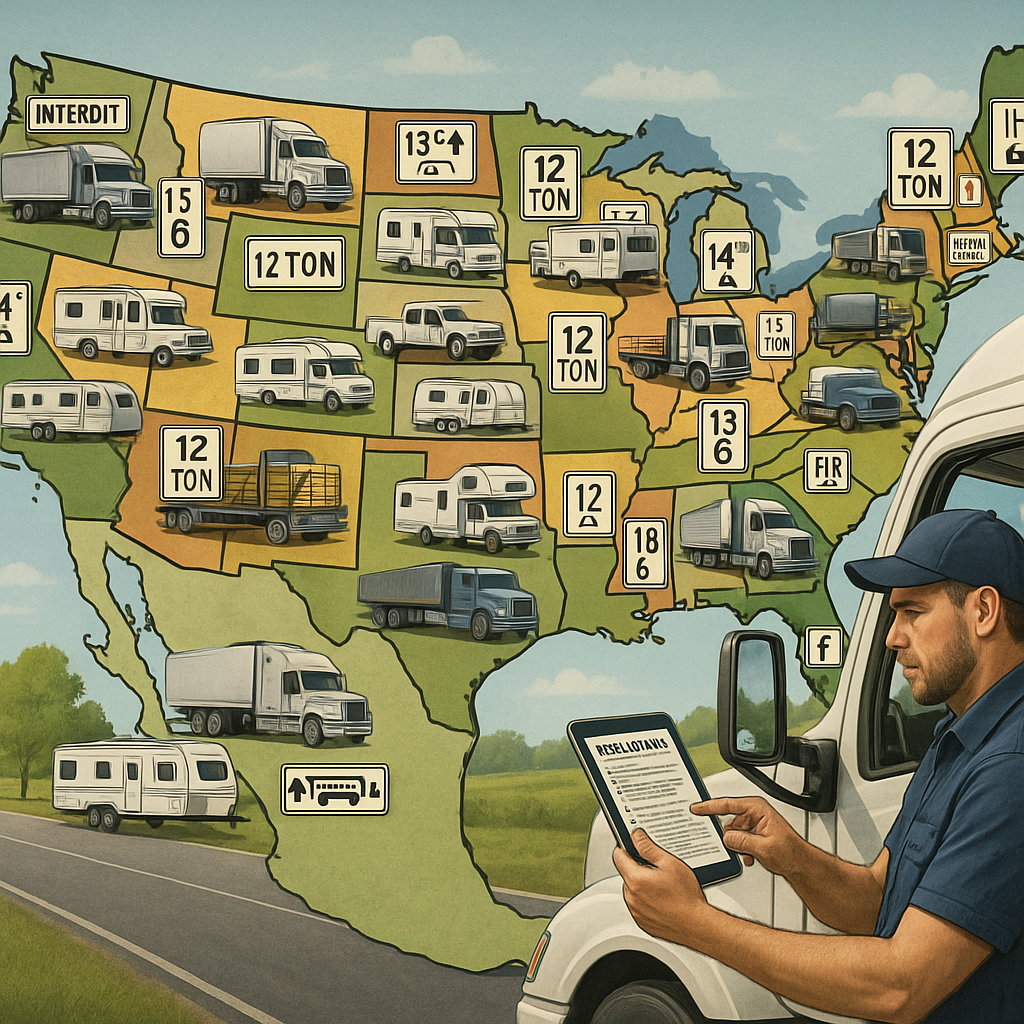If you’ve ever been caught in traffic with a wide load ahead of you, you already know: oversize transportation doesn’t just take up extra space on the highway—it comes with its own set of rules, timing, and safety challenges. For trucking companies, shippers, and operators, understanding oversize travel restrictions isn’t just a matter of compliance—it’s the difference between hitting your delivery window or losing thousands of dollars in fines, idle time, and rescheduling fees.
Reliable Permit Solutions works with carriers across the country to simplify these challenges, but the reality is this: every state enforces its own regulations. That means what’s acceptable in Texas may be a complete violation in California. This guide breaks down the key categories of restrictions you need to know, why they exist, and how to move through them without risking your bottom line.
Why Oversize Travel Restrictions Matter
The stakes are high. An escort vehicle that wasn’t arranged on time or a restriction that went unnoticed could sideline your entire trip. Violations often come with hefty fines, points against your record, or even forced offloads. Beyond the penalties, oversize travel restrictions shape how efficiently you can use your drivers’ hours of service. When daylight-only rules or weekend travel bans hit, that can mean hours—or days—of sitting still.
At its core, these restrictions exist for safety. Oversize and overweight loads change braking distances, visibility, and turning radiuses. States set these limits to protect not just your driver and cargo, but everyone else on the road.
Breaking Down the Basics
When it comes to oversize load regulations, there’s a crucial distinction: federal guidelines set baseline safety requirements, but state DOTs write their own enforcement rules. That’s why the patchwork feels complicated.
The categories most carriers face include:
- Time-based rules (daylight travel only, no weekends, or holiday blackout periods).
- Weather restrictions (limits during fog, snow, or high winds).
- Route restrictions (bridges, construction detours, or prohibited highways).
- Support requirements (pilot car requirements and escort vehicle rules).
The bigger the load dimensions, the more restrictive the movement becomes. A manufactured home traveling cross-country might clear some rural roads, but once it enters an urban corridor, the rules change instantly.
Time-Based Restrictions: The Silent Cost Driver
Many states enforce daylight-only travel requirements for oversize loads, making winter months particularly costly since daylight hours are short. Several states prohibit weekend travel altogether, and almost all enforce holiday travel blackouts around major weekends like Memorial Day or Thanksgiving. In metro areas, rush hour restrictions add another layer—New York, for instance, won’t let you crawl through during peak traffic windows.
These rules are designed to keep wide or heavy loads off the roads when traffic is already at its most dangerous. For carriers, it means trip planning has to be precise. Missing your permitted window by an hour can cascade into a full day of delay.
Weather-Related Restrictions
Weather is one of the trickiest parts of oversize compliance. Many states restrict movement when wind speeds exceed 25 to 40 mph, when visibility drops below 500 feet, or when snow and ice make stopping unsafe. For example, Wyoming often enforces strict oversize suspensions during winter storms, while states like Florida may adjust restrictions for hurricane conditions.
For operators, this is where real-time updates matter most. If you’re navigating with old data or outdated permits, you can easily end up parked for days at a weigh station.
Route-Specific Challenges
Even with a valid permit, oversize carriers must navigate bridge weight limits, construction zones, and restricted highways. Some states keep oversize loads off scenic routes or urban freeways entirely, funneling traffic through industrial corridors instead. A route that’s clear in Nebraska may become nearly impossible in Colorado mountain passes.
That’s why many carriers turn to Reliable Permit Solutions—not just for permits, but for strategic route consulting services that ensure compliance before the first mile begins.
How Reliable Permit Solutions Keeps You Moving
With so many oversize travel restrictions in play, trying to manage compliance without help is risky. Reliable Permit Solutions provides more than just permit acquisition—we help carriers with:
- Route consulting and mapping to avoid restricted highways and construction detours.
- Real-time updates on state-specific blackout periods, weather restrictions, and urban rush-hour rules.
- Permit acquisition strategies that streamline approvals, reduce downtime, and keep your drivers rolling.
By aligning trip planning with state-specific laws, Reliable Permit Solutions ensures your load doesn’t just meet compliance—it gets delivered on time.
Final Thoughts
At the end of the day, oversize loads are the backbone of construction, infrastructure, and industry. But they move differently than standard freight, and the web of oversize travel restrictions proves it. From daylight-only windows to weather shutdowns and holiday travel bans, these rules shape how and when your fleet can move.
The good news? You don’t have to navigate this maze alone. With Reliable Permit Solutions, you get a partner who understands both the rules and the real-world challenges of oversize freight. Stay compliant, stay efficient, and keep your deliveries moving forward.

